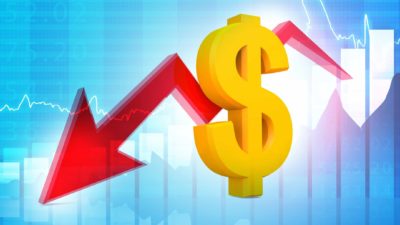Markets are rangebound today with the benchmark S&P/ASX 200 Index (ASX: XJO) trading 79 basis points higher at 7,523.
Brent Crude has levelled off and now trades at US$110.87 a barrel whereas the world's safe haven, gold, has climbed 3.75 points to US$1,922/t.oz.
Investors often use these kinds of macro indicators to stipulate the present nature and future direction of both financial markets and the real economy.
One other leading indicator is known as the yield curve, a graphical representation of the interest rates (yields) on government bonds.
What is the yield curve?
Governments around the world finance their budgets and large capital works by issuing various types of debt in the capital markets.
The instruments are either known as bills, notes or bonds, depending on the maturity lengths of this debt. These range from 1-month bills, 10-year notes, all the way up to 30-year bonds, just to name a few.
Each of these government bonds has a quoted yield – or return – that investors will realise depending on the bond's price. There is an inverse relationship between price and yield.
The yield curve simply plots the current yield of all these bonds, at their various maturities. When talking about US Treasury Bonds, it is known as the US yield curve, same in Australia, and so on.
Take a look at the current shape of the yield curve, by plotting the current yields against their maturities, below (reference, one is to ignore the x-axis).

Slope of the yield curve
The shape, or slope, of the yield curve is incredibly important information for investors in the quest to understand 'what could come next'.
Ideally, the curve is sloping upwards, as seen above, because investors expect economic conditions to be better in the future – hence they will accept a lower yield today, in exchange for a higher yield in the future.
That's why, in the chart above, we see the US 10-year yield higher than the 2-year, and the yield on 30-year bonds higher than the 10-year, and so on.
A steepening curve generally is a sign of stronger economic conditions, meaning higher inflation and potentially higher interest rates to accompany it.
Whereas a flattening curve generally indicates the opposite – a slowing of the economy. Hence, the outlook – or yield – into the future looks less promising in this scenario.
Why's that even matter?
Market pundits analyse certain portions of the curve to make informed decisions about the economy, sectioning it into the short end, the belly (middle), and the long-end of the curve.
They also look at the spreads between two bonds – most commonly, the yield on US 10-year minus 2-year issues – known as the US 2s/10s spread. There are many others.
Whereas a paper from the US Federal Reserve Bank of San Fransisco said the 10yr/3-month spread could be more valuable.
Which brings us to an inverted yield curve. When the yield curve inverts, it slopes downwards, meaning investors reckon the future looks less bright than it does today.
Fixed income expert Frank Fabozzi notes that market pundits pay particularly close attention to the US 2yr/10yr spread as a leading indicator of a potential economic recession, in his book, The Handbook of Fixed Income Securities.
According to Reuters, "the 2s/10s part of the curve inverted, meaning yields on the 2-year Treasury were actually higher than the 10-year Treasury," on Tuesday.
"That is a warning light to investors that a recession could follow," it added.
"The last time the 2s/10s part of the yield curve inverted was in 2019. The following year, the United States entered a recession – albeit one caused by the global pandemic".
Bloomberg Intelligence adds more flavour, noting that in every recession since 1955, the US yield curve has inverted each time just beforehand.
"An inverted yield curve…has been a reliable indicator of impeding economic slumps, like the one that started in 2007," Brian Chappatta and Greg Ritchie of Bloomberg wrote today.
"The 2s/10s inversions, on the other hand, preceded the last eight recessions, including 10 of the last 13, according to BoFA Securities in a research note," Reuters also commented. On around 80% of occasions, a recession followed between 6–24 months.
Meanwhile, Alfonso Peccatiello, former portfolio manager of the $20 billion fixed income portfolio at ING Markets, and editor of The Macro Compass newsletter, suggests that the US Overnight Index Swaps (OIS) curve might be a cleaner and more useful measure.
"Basically, OIS swaps tell you where the fixed income market consensus expects Fed Funds rates to move over a fixed period of time," he recently wrote in a note to subscribers.
"The most recent [interest rate] hiking cycles have lasted on average around 2-5 years (1986-1989, 1994-2000, 2004-2007, 2015-2019) and traders' expectations are therefore reflected in 2 to 5 years OIS rates," he added.
"That makes 2s/10s, 5s/30s or similar OIS curve slope combinations pretty decent and forward looking macro indicators".
Not all are convinced on the downbeat view of things
Which brings us to why people are talking about an inverted yield curve.
Given its somewhat 'predictive power', when the yield curve inverts, it spells trouble for the economy and financial markets, some claim.
But things are different this time, experts also say – and boy they are. Given the US Fed's mammoth QE programs over the last 2 years, the US treasury market is now in uncharted territory.
"[The Fed's QE program] has resulted in an undervalued U.S. 10-year yield that will rise when the central bank starts shrinking its balance sheet, steepening the curve," Reuters wrote, summarising analyst sentiment.
Meanwhile, Timothy Graf, head of European, Middle East and Africa (EMEA) macro strategy at State Street said "I suspect we will get a growth slowdown but will it lead to recession? It may be next year's story."
"Households will want to see the fuel prices coming down but generally household balance sheets are in pretty good shape".
With all the calamity going on in the world, it remains to be seen what the next moves in the economy will be, but rest assured, it's not as rosy as it was in pre-COVID times.









